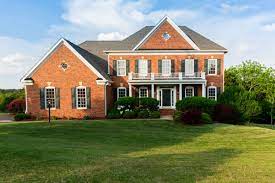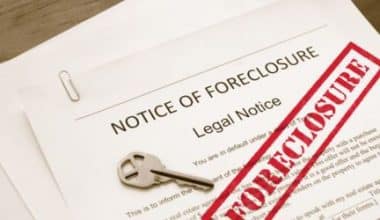Cap rate or capitalization rate, is a formula used in real estate to estimate the potential return an investor will make on a property. The cap rate is very important in calculating the rate of return on multiple real estate properties. However, determining a good cap rate can be daunting depending on the valuation of the asset class and the market location of the assets. On the other hand, there are situations when it is right to use the cap rate and when you don’t need to use it. If you’re not certain about that, this article will guide you on how to check out a good cap rate in real estate and how to calculate it using the formula.
What Is a Cap Rate in Real Estate?
Cap rate in real estate is a formula used to calculate the potential return on investment properties. The cap rate is typically expressed as a percentage, ranging from 3% to 20%. In general, cap rates are inversely related to property values. The lower the cap rate, the higher the purchase price, and vice versa.
Furthermore, the cap rate is useful for quickly comparing the relative value of similar real estate investments in the market. It should not be used as the sole indicator of an investment’s strength because it disregards leverage, the time value of money, and future cash flows from property improvements, among other factors.
What Is an Example of a Cap Rate Real Estate?
Investors compare various real estate holdings using capitalization rates as their major heuristic. For instance, a property with an asking price of $10 million and an expected NOI of $1 million would have a capitalization rate of 10%.
Formula for Cap Rate in Real Estate
There are several methods for calculating the cap rate in real estate. The most common formula for calculating a cap rate in real estate is to divide the property’s net operating income (NOI) by the current market value.
The formula for cap rate in real estate = Net Operating Income / Current Market Value where:
- Net operating income is the annual income generated by the property after deducting all operating expenses; such as property management and tax payments.
- The current market value of the asset is the value of an asset in the marketplace.
Another formula for calculating cap rate is using the property’s original capital cost or acquisition cost.
Cap rate = Net Operating Income / Purchase Price
This cap rate formula is not very popular in real estate for two reasons. Firstly, it does not give realistic results for properties bought at low prices several years/decades ago. Secondly, you cannot apply it to inherited properties because their purchase price is zero, making division impossible. Furthermore, since property prices fluctuate so much. The first version, which uses the current market price, is a more accurate representation than the second, which uses the fixed value original purchase price.
What Does 7.5% Cap Rate Mean?
To calculate a CAP rate, just divide the annual net operating revenue by the acquisition price of the building. For instance, if an investment property costs $1 million and generates $75,000 in NOI (net operating income) year, the capitalization rate is 7.5%.
What Does a 3% Cap Rate Mean?
Cap rates are viewed as a measure of risk and return; a “low” cap rate of 3-5% would indicate that the asset is low risk and high value, whereas a “high” cap rate of 8-10% would indicate a lower price, higher risk, and higher return.
How to Calculate a Cap Rate in Real Estate
You calculate the cap rate in real estate using the formula by dividing the property’s net operating income (gross income fewer expenses) by the asset’s value.
#1. Learn To Calculate The Property’s Net Operating Income
In calculating the cap rate the NOI is the sum of the real estate property’s income streams minus the sum of the property’s expenses.
You can use any type of income that the property can generate; such as rental income, fees, and onsite amenities that require additional fees; when totaling up the property’s income streams. Assume you’re thinking about buying a property that earns $10,000 per month in rental income but has no other sources of income. You will need to add up the expenses for the property such as property taxes, insurance premiums, repairs, and legal fees.
However, there are some less obvious costs you need to consider such as potential vacancies. Most investors assume a 10% vacancy rate, but you can do some research in your area to get an accurate estimate of the property’s vacancy rate. The total expenses for the property you are considering are $1,000 per month, which includes a 10% vacancy expectation.
You can subtract the costs from the income once find out the property’s income and expenses. This is how to determine the NOI.
#2. Divide By The Current Market Value
When you have gotten the NOI the next step is to divide the net operating income by the current market value. Although, some investors in real estate argue about whether it is good to use the current market value or the purchase price to calculate the cap rate. But the majority of investors use the current market value of the property.
In addition, you can determine the property’s current market value by reviewing the property details and using one of the many home valuation estimation tools available.
#3. Convert Into A Percentage
The final step is to convert your division’s product into a percentage. You can do this by multiplying the result by 100. For example, if you buy a house at $1,000,000 and generate $100,000 in positive net operating income (the amount remaining after the deduction of fixed and variable expenditures from gross leasing income) in one year.
Then: $100,000 / $1,000,000 = 0.10 = 10%
The cap rate of the asset is 10%; one-tenth of the cost of the home paid by the year’s net proceeds.
What Cap Rate Is the 1% Rule?
In real estate, the 1% rule is used to compare the purchase price to the expected annualized gross rental revenue. Potential investments must have monthly rent that is at least equivalent to one percent of the acquisition price in order to pass the one percent criteria.
Importance of Cap Rate in Real Estate
Cap rate is important to investors since it measures a commercial property’s return rate and allows for easy comparison to similar properties. When setting the cap rate, you must address the percentage of risk because a property with a low cap rate may have a high vacancy rate, making it a high-risk investment. A property in bad condition might also harm the cap rate because the overall value is lower. However, cap rates are affected by several factors. So you can use this formula to compare properties with similar characters.
What Is a Good Cap Rate in Real Estate?
A good cap rate in real estate comes with potential earnings, which can be volatile and fluctuates most often. You can know a good real estate cap rate in two ways; what you want to receive out of an investment and how much risk you are ready to take. A higher cap rate implies a higher level of risk, whereas a lower cap rate indicates a lower level of risk. Cap rates are also inversely related to the value of the property. A higher cap rate corresponds to more expensive property, whereas a lower cap rate corresponds to less expensive property.
Generally, the formula assigns assets with higher net operating income and lower valuation to a higher cap rate. While assets having a greater valuation but a lower net operating income will have a lower cap rate.
Investors typically consider lower cap rate properties to be safe, but they should expect a longer timeline to recoup their initial investment. As an investor, you should consider what an acceptable cap rate for the properties in your portfolio is. If you have a number in mind, you can rapidly pass on homes that do not satisfy your risk tolerance.
Is a Higher Cap Rate Always Better?
A greater cap rate often indicates a bigger chance of loss. That is to say, if your asset’s capitalization rate is high, but the asset’s price is low, the investment is perhaps riskier than it appears. However, market cap rates might vary widely from one location to the next. Consequently, you should use caution.
Factors That Affect Cap Rates
The cap rate equation is influenced by several things. Before using the cap rate to make investment decisions, it’s important to understand the factors that affect the cap rate. For instance, vacancies affect the NOI, the length of tenant leases, the types of tenant leases, and the creditworthiness of the tenants. The location, the present market, the quality of the structure or real estate, and a variety of other factors affect the cap rate. To truly comprehend the cap rate, investors must consider these many elements.
Here are a few of the factors that can have a massive effect on cap rates:
- Location. The property’s location can have a significant impact on a good cap rate in real estate. A higher cap rate usually affects risky locations.
- Market Size. A large, competitive market may have lower cap rates than a smaller, riskier market.
- Asset Stability: The future stability of the property value may be considered.
- Growth Potentials. A property with a lot of growth potential in a growing market can also be influenced by cap rates
- Capital liquidity. The capital investment you employ in the property has a significant impact on the cap rate because it directly affects the NOI.
When to Use and When Not to Use Cap Rates
Real estate investors can use a good cap rate to estimate the potential return or profitability of an investment. When investing in real estate, you want to maximize your chances of profit while remaining within your comfort zone.
Cap rates can assist you to decide between markets, property kinds, and other investment possibilities. For instance, to estimate prospective profit, compare a property’s cap rate to the annual interest rate on government-issued Treasury bonds.
These two investment opportunities, however, are not fully the same. Bonds provide a level of certainty by guaranteeing a set return if you hold them until maturity. Property investments contain risk, which comes as a result of the resale value of the property, the rental market, vacancy or problem tenants, or negative cash flow. Property investments are risky because cap rates depend on predicted net income and varying market value.
While cap rates are useful for efficient calculations, there are times when you should not consider using them. If you apply correctly a stabilized Net Operating Income (NOI) prediction, the basic cap rate can provide a valuation that is close to that of a more comprehensive discounted cash flow (DCF) study. Only a thorough discounted cash flow analysis will produce a fair and trustworthy valuation, if the property’s net operating income stream is complex and irregular, with significant fluctuations in cash flow.
Conclusion
You can use a cap rate to determine the return rate of your multiple property investment in real estate transactions. A good cap rate comes with potential earnings although it fluctuates most times. But you need to understand when and when not to use it. Cap rates can assist you to decide between markets, property types, and other investment opportunities. It helps to estimate prospective profit, and compare a property’s cap rate to the annual interest rate on government-issued Treasury bonds.
Cap Rate in Real Estate FAQs
What does a cap rate of 7.5 mean?
A 7.5 cap rate means that you can expect an annual gross income of 7.5 percent on the value of your property or investment. If your property is worth $150,000, a cap rate of 7.5 will mean a yearly return of $11,250.
Is cap rate the same as ROI?
The cap rate shows you what the current return on an income property is, whereas the ROI tells you what the return on investment could be over a specific timeframe.
Does cap rate include debt service?
The net operating income, or NOI, is the amount of money you earn from the rental property after the deduction of expenses. While debt service is not included, property management, taxes, insurance, upkeep, and other expenses should be.
How do you raise the cap rate?
If you buy the property and employ a new property manager, you can quickly increase your cap rate by simply raising the rent:






